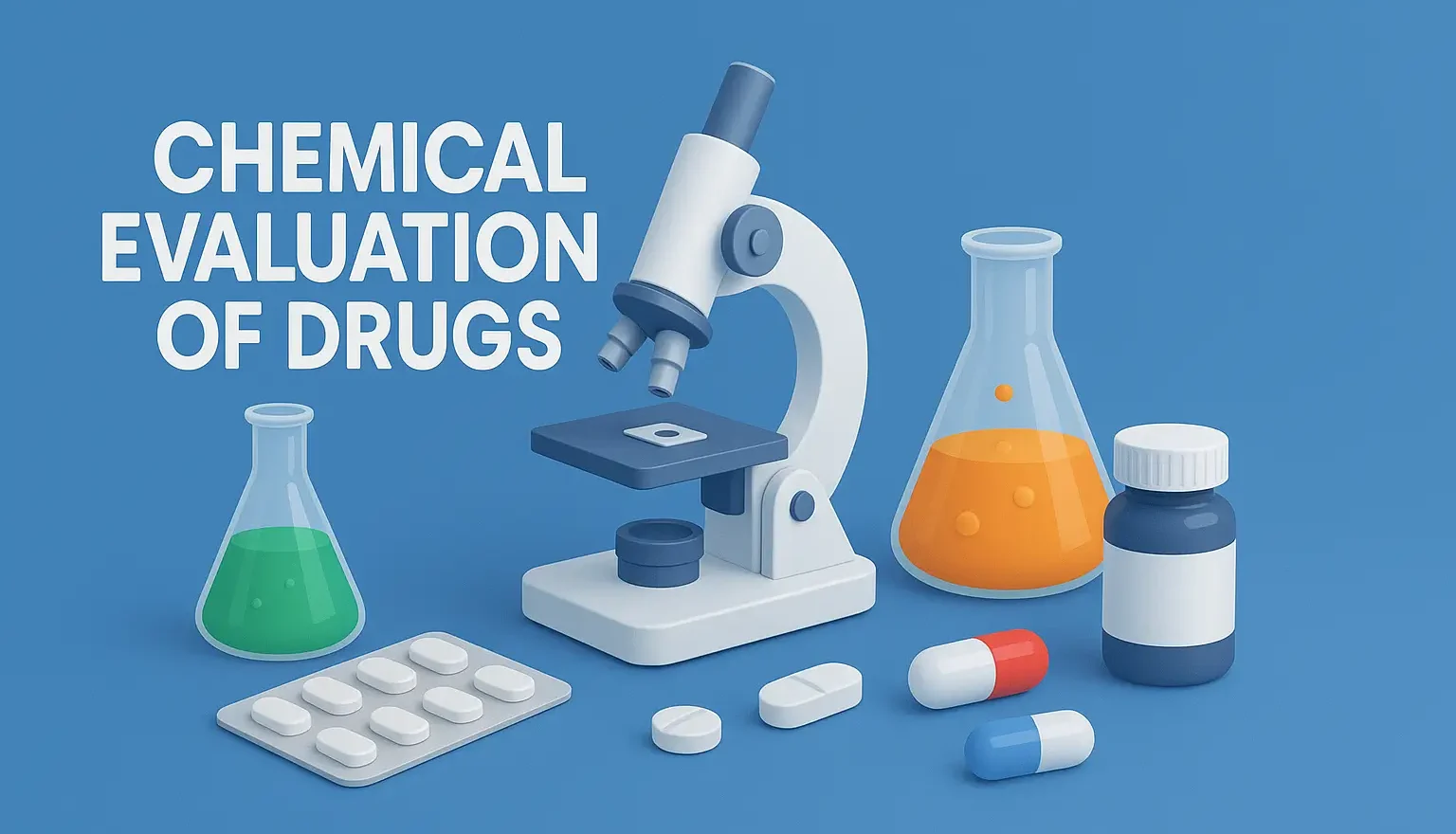- Chemical Evaluation of Drugs analyzes composition, purity, and chemical structure for quality assurance.
- Chemical Evaluation of Drugs ensures safety, potency, and compliance with pharmaceutical standards.
Definition
- Qualitative and quantitative chemical analyses to identify and measure active constituents or marker compounds.
Approaches
-
Simple Chemical Tests:
- Color reactions (e.g., Mayer’s reagent for alkaloids, Ferric chloride test for phenolics).
-
Chromatographic Techniques:
- TLC / HPTLC: Quick, cost-effective separation and identification.
- HPLC / GC: More precise, can quantify individual components.
-
Spectral Methods:
- UV-Vis, IR, NMR, Mass Spectrometry for structural and purity analysis.
-
Assay Methods:
- Determining percentage of main active constituent (e.g., total alkaloids in belladonna, curcuminoids in turmeric).
Significance
- High specificity; can detect small amounts of adulterants.
- Essential for standardization and ensuring consistent therapeutic potency.
Limitations
- Requires laboratory equipment and technical expertise.
- More time-intensive and costly than preliminary methods.
Click Here to Watch the Best Pharma Videos

